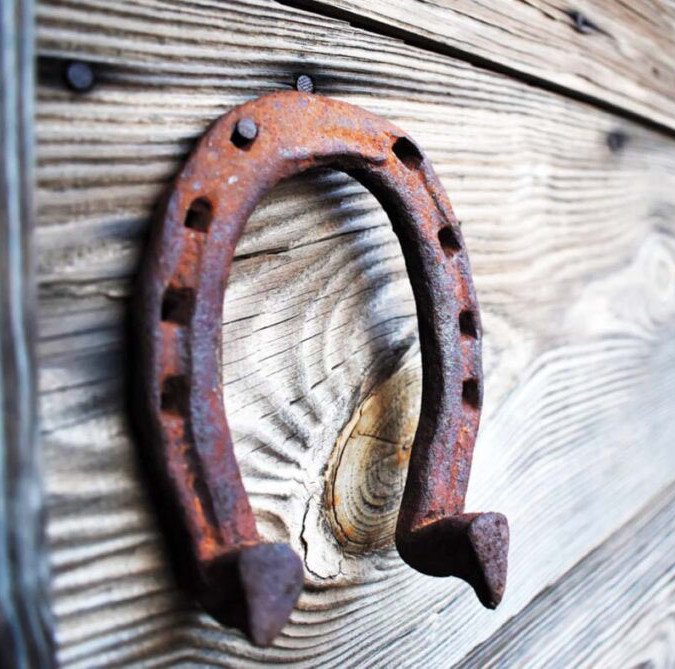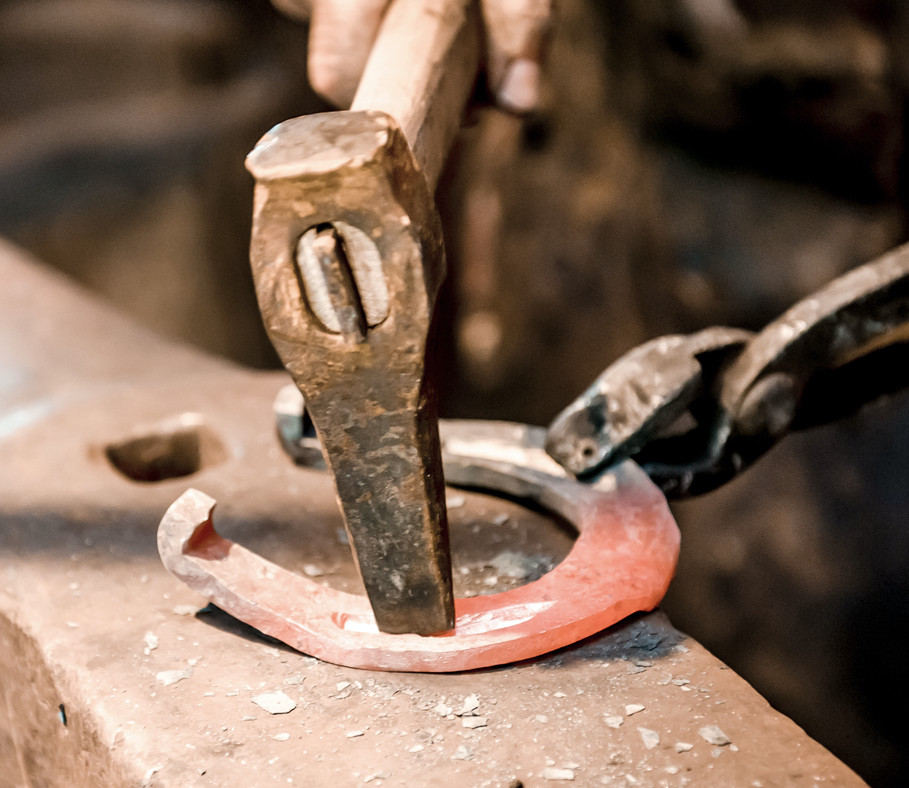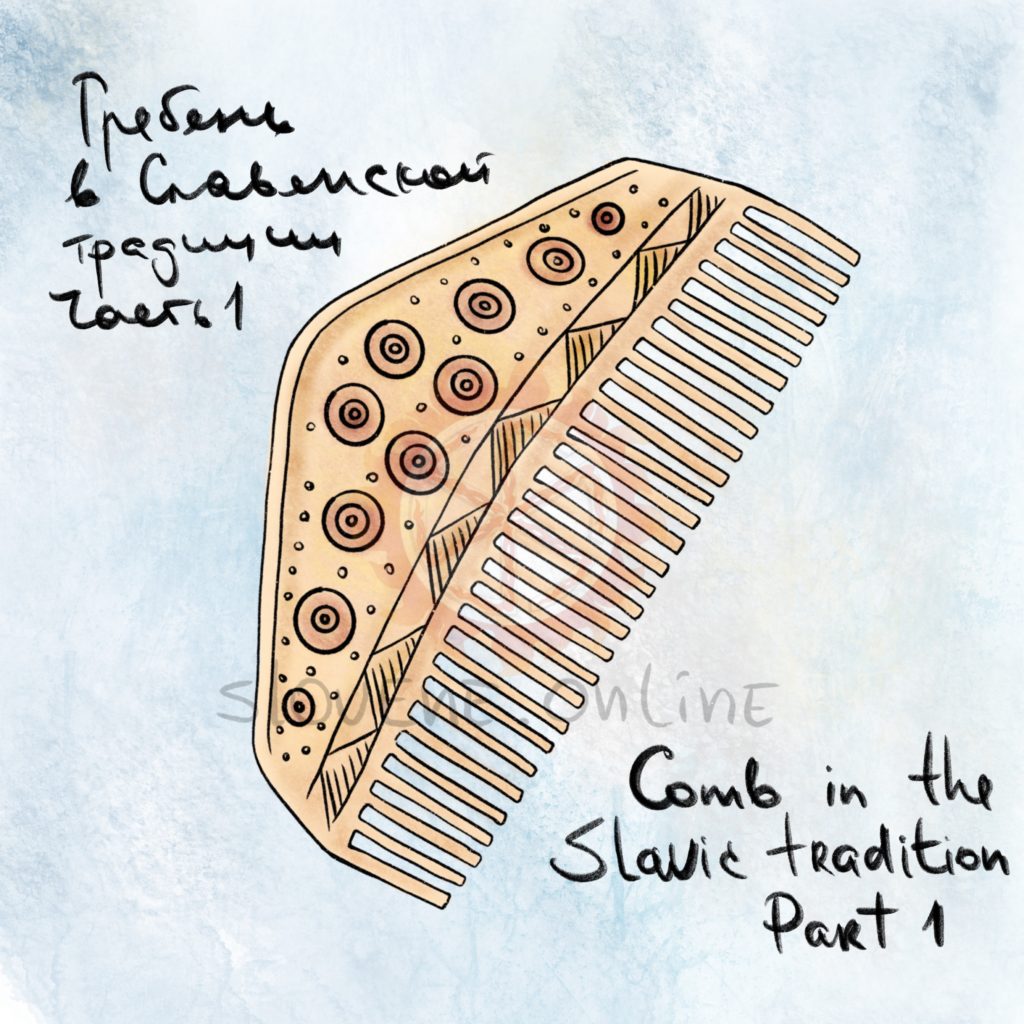Most often, the horseshoe was placed on the symbolic border of the “home space”. The Serbs buried it under the doorstep or in the foundation of the house during construction. Eastern and southern Slavs nailed a horseshoe on the doorstep or hung over the doors, as well as in the barn.
ꏍ
In the Carpathians, a horseshoe, together with an old shovel, was stuck into cabbage beds in the garden, so that people would look at these objects (and not at the cabbage) – in order to protect the crop from being “jinxed”. In Polesie, a horseshoe was placed under a girl’s pillow at night as part of a love magic ritual “to attract the boys.”
ꏍ
A horseshoe was nailed at the doorstep to “attract wealth to home,” as they said in Zhitomir (Ukraine), or for “people to be healthy like a horse,” as they said in Brest (Belarus). In Serbia, for a housewarming party, a horseshoe was nailed in front of the new house, “so that the happiness would go into the house, and not from it”. According to the Slavic tradition, a horseshoe found on the road was endowed with such special powers more than others.
ꏍ
Do you have a horseshoe at home? Where do you keep it and for what purpose?
ꏍ
To be continued…
ꏍ
Horseshoe in Slavic tradition
Horseshoe in Slavic tradition served as a talisman both for people and house animals. It protected home from the evil eye and spirits, did not allow witches and sorcerers to “steal” milk from cows. And diseases, as the eastern and southern Slavs believed, were “captured” by the horseshoe and were not able enter the house.
ꏍ
In Russia, Serbia and Belarus, a horseshoe placed on the border of the home space was also believed to have a fertility/ producing power. It was perceived as an amulet capable of bringing good luck, happiness, fertility for people and animals, good cattle milk yield. In Polesie region, horseshoe was also used in love magic. 💕
ꏍ
Such properties of the horseshoe are due to the ability of iron to ward off evil spirits, as well as the method of crafting it (the blacksmith, forging the horseshoe, beats it with a hammer) and the fact that it was associated with a horse that trampled the horseshoe with its feet.
ꏍ
What properties do you think a horseshoe from a gift shop has?
ꏍ
To be continued…
ꏍ
Comb in the Slavic tradition – Part 1
A comb was traditionally regarded by Slavs as sharp, pricking apotropaic object as well as female and erotic symbol. Due to its frequent teeth and contact with hair, it was also endowed with producing properties.
We continue to familiarize you with the customs and beliefs of the ancient Slavic people, while working on the animated fantasy comic book series. In such posts, as if jumping forward in time, we shed light upon and help to understand the events that will occur in our story … 😉
According to Bulgarian customs, the girl hid her comb from strangers, since it could be used to hex the owner. Thus, after combing, she would immediately wrap the comb in a towel and put it in a secret place. In Belarus, people were not allowed to leave the comb in an open place, believing that this could cause trouble. In Poland, if a comb fell on the floor, people would guess which visitor to expect – frequent or rare (depending on the frequency of the comb teeth).
In girls’ divination and in love magic, the comb symbolized a girl or was an attribute of a groom. In the Vologda region, the girls hung a comb outside the window and chanted: “My betrothed, come and comb your hair!”. In Polesie region, on Kupala night, the girls made a comb of “ant oil” and combed guys with it to bewitch.
“The Catalogue Of Rudolph’s Magic” (13th century) says about divination ritual using a comb by Slavs in Silesia: «They prepare water and put it together with a comb, oats and a piece of meat with these words: “Come, Satan, take a bath, comb your hair, give oats to your horse, and meat to your hawk, and show me my husband”». In Eastern Serbia, around a new year, girls would put fragments of a comb, a piece of coal, soot, a mirror, etc. under the shards: whoever pulls out a comb fragment will get a groom “with teeth”. The comb was given to the bride at a Russian wedding; among the Serbs, the mother-in-law always gave the daughter-in-law a comb along with other gifts.
To be continued…
Source: “Slavic Antiquities” – encyclopedic dictionary in 5 volumes by Institute for Slavic Studies of the Russian Academy of Sciences.


